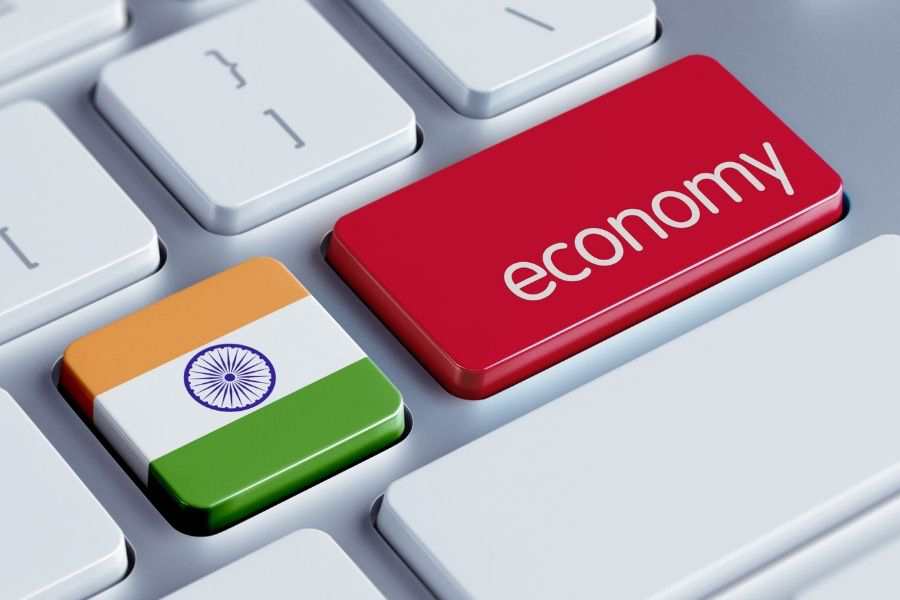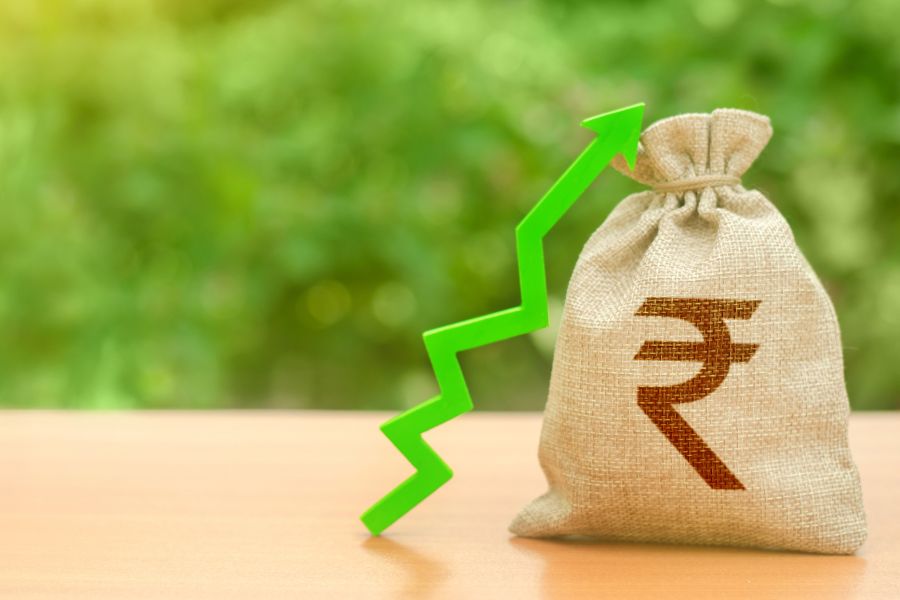Revisiting India’s macroeconomic outlook post-COVID
Macroeconomic policies to boost manufacturing and capitalise on the relocation strategies being pursued by multinationals should adopt a bottom up approach and emphasise on building essential attributes like capacity building, technology transfer, infrastructure, logistics and transportation.
- India’s direct leap from the primary sector to services has shifted the terms of trade (ToT) towards services, creating a surge in wage disparity.
- This transitional structure has significantly impaired India’s manufacturing capability and its presence in global value chains.
- There have been major policy interventions to revamp India’s manufacturing. The experience so far emphasises the need for a more bottom up approach.
- There has to be a requisite policy that can truncate India’s dependency on imports of at least those products which are demand inelastic and sensitive in nature.

India’s macroeconomic journey has been a major aberration if we go by Kuznet’s empirical findings of the country’s employment and sectoral transition. The country’s direct leap from the primary sector to services has shifted the terms of trade (ToT) towards services, leading to a surge in wage disparity.
This transitional structure has significantly delayed India’s ability to improve its competitiveness in core manufacturing activities. It might be cited as one of the crucial reasons for India’s minimal presence in global value chains, at least till the first decade of the millennium.
The missed plot
Developed economies like the US and Canada represent a relatively more balanced terms of trade compared with developing economies like India. This results in extensive migration from rural to urban creating high pressure in urban areas to sustain a decent standard of livelihood.
For example, in the developed nations, labour productivity in agriculture and manufacturing seems to be comparable because of large cultivating fields, extensive use of technology and skills. Due to these factors, between 5% to 10% of the labor force engaged in agriculture is producing the entire agricultural output. On the other hand, this figure is about 46%-47% in India for agriculture and 52% including allied.
This scenario is further juxtaposed with stagnant productivity (incorporating quality) in manufacturing sector, thus making it less resilient for emergency/pandemic situations, which we are currently witnessing.
India’s dependence for finished manufactured products like laptops, cellular phones, mechanical appliances eloquently describes our position and strength to compete with global firms.
There have been major policy interventions to revamp India’s standing like Make in India and Import Substitution Industrialisation (ISID). The learnings from these policy interventions suggest that India now needs to follow a bottom up approach, which isolates the refurbishment of essential attributes like capacity building, technology transfer, infrastructure, logistics and transportation. These issues affect our quality of products, whose acceptance within our domestic market is ordinary.
Perpetual Dependence
To understand this more clearly, let’s have a look at the import basket. India’s import basket of 2020, signals that the dependency still prevails on those commodities, which were extensively imported five to seven years before.
Just to highlight this using an example from the current scenario, India’s dependence on medical instruments, surgical apparatus, and high-end technical apparatus and medical machines still remains significant over these years. During 2013, its medical & optical instruments imports represented 1.45% of total imports. In the current scenario, this figure burgeoned to 2.23%.
Another example is the electronics sector. Imports of electronic goods augmented from US$ 32.4 billion to approx. US$ 55.6 billion between 2013-14 and 2019-20, while exports inched up marginally from US$ 7.6 billion to roughly US$ 9 billion over the same period. Many cell phone assembly firms have come up but they are yet to up to a vibrant electronics industry that can compete in the global market.
During late 1980’s and 1990’s India protected domestic stakeholders from global competition. WTO, too gave some additional breathing space to developing economies for removing direct monetary support, but for a specific time frame (except for peace clause). Indian manufacturers cannot continue to depend on these subsidies for their global competitiveness.
Moreover, there has to be a requisite policy that can truncate India’s dependency on imports of at least those products, which are inelastic and sensitive in nature like oxygen concentrators, oximeters and other basic medical/non-medical commodities, which directly impact human survival (even if we ignore the business and commerce interest). India cannot afford to continue depending heavily on countries like China, Germany, and the US for negating the impacts of emergencies like the current pandemic.
Hence, there has to be a major realignment in terms of trade, which will have a trickle-down impact on agricultural and manufacturing productivity, leading to a spillover effect on wages, consumption, and output.
India’s GDP growth has done exceptionally well, making it amongst the top growing nations during the last decade, largely driven by services and services-led sectors like automobiles and pharma.
The COVID-19 pandemic has affected the economic outlook of most of the nations including India, which witnessed a negative 7.3% growth in FY 2020-21. But a more critical area of concern is the employment loss, specifically in the manufacturing sector.
It is often said that India missed the bus of manufacturing-led growth what China boarded three decades back. This might not be the correct way to look at it. India needs to understand that the existence of multinational companies at different geographical locations during different time periods is an outcome of achieving technological access and high market share. After reaching saturation in terms of price, technical innovation and physical presence, these companies naturally seek new vistas.
Within South Asia and Southeast Asia, India definingly is a strong contender in terms of offering a manufacturing base and investment, with the added attractiveness of its consumer market. This is visible from recent interest of large multinational players like Samsung, which opened the largest mobile manufacturing plant in Noida.
The current scenario offers a window of opportunity, where global companies are looking at possibilities to de-risk their manufacturing operations. Policymakers need to look at how best these companies can be attracted, especially in view of growth trends in segments like electric vehicles, solar, AI, IoT, etc which are expected to dominate the future of global business and trade.













Leave a comment